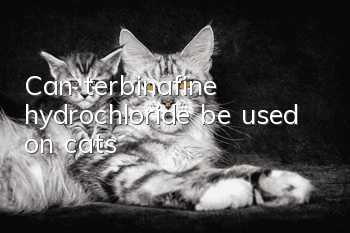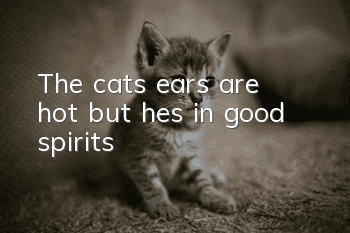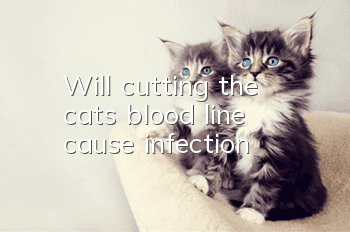Methods for tooth extraction and post-operative care for cats with oral diseases

Some cats’ oral diseases need to be treated by tooth extraction, such as feline stomatitis, periodontitis, etc., and sometimes the lesions of the teeth and surrounding tissues interact with each other, resulting in large-scale disease in the cat’s mouth. Faced with this In this case, tooth extraction is also a helpless choice. Of course, cat tooth extraction is also a big operation that requires correct methods and post-operative care.
1. About anesthesia
The first choice for anesthesia is definitely inhalation anesthesia. The analgesic effect and depth of anesthesia of injection anesthesia cannot meet the surgical requirements. Cats often struggle and bite their jaws during surgery, which brings great trouble to oral surgery operations. Especially for some patients with strong tooth roots, part of the alveolar bone needs to be worn away, which is very painful. If the anesthesia is not done properly, the operation cannot continue. If the operation is not easy to perform, it will inevitably affect the effect of the operation, especially because the bleeding cannot be stopped well after struggling, and it is not conducive to suturing the gingival tissue after the operation.
When performing ultrasonic teeth cleaning, the animal needs to be intubated and the animal’s head is lowered during the operation. This can prevent the animal from accidentally inhaling oral fluids and secretions during the anesthesia process. This is something many people think about. I understand. In the case of oral ulcers in cats mentioned in this article, there was a large amount of purulent secretions in the mouth before tooth extraction. The secretions in the mouth need to be cleaned up and fully disinfected before surgery. This requires Clean with plenty of saline and mucous membrane disinfectant. When performing these operations on animals under anesthesia, without tracheal intubation, it is very easy to inhale these liquids into the lungs, causing foreign body pneumonia and life-threatening consequences. Therefore, endotracheal intubation can ensure safety. Tracheal intubation can only be performed under good anesthesia. Tracheal intubation can rarely be performed under injection anesthesia because the glottis and trachea are very sensitive. If the anesthesia is not deep enough, it will cause glottis spasm and coughing.
2. Tooth Extraction Method
Methods such as dividing the crown and wearing the alveolar can be used. I think in this part, professional veterinarians should first learn how to operate in a standardized manner to ensure that all tooth roots are extracted.
In addition, the periodontal ligament and gums need to be separated before tooth extraction. The purpose of this is to minimize the damage to the soft tissue and ensure the neatness of the postoperative wound, which is conducive to wound healing. In addition, the gums are separated very well, and suturing can be done after the operation to speed up healing.
After tooth extraction, it is recommended to perform suturing for those with large gum wounds. This will not only speed up healing and reduce the chance of infection, but also effectively reduce oral bleeding caused by tooth extraction. It is best to use synthetic absorbent suture threads with needles. This kind of needle is a non-damaging suture needle. Using this kind of needle thread will cause less damage and the gingival tissue will be very brittle. If other types of suture needles are used, it will inevitably cause tearing of the gingival tissue. . In addition, this kind of suture does not need to be removed, etc.The sutures will fall away once the gums have healed, so there is no need to remove them.
3. The importance of postoperative care in preventing recurrence
Through long-term experiments and research, most scholars believe that this disease in cats is caused by the high sensitivity of the cat’s oral cavity. Maintaining oral health is the key. Therefore, ensuring oral hygiene and reducing the breeding of harmful bacteria can ensure the lowest level of control of this oral disease. This is crucial in the small proportion of cases that do not fully recover after surgery. Several patients had good results after tooth extraction, but relapsed after a period of time, and were later hospitalized for care. During the hospitalization, oral rinses were performed daily. When they were discharged after a week, the oral mucosa healed well and basically returned to normal, but the symptoms returned. About a week after returning home, due to no one to take care of her, her condition deteriorated immediately. Later, he was hospitalized for nursing care, and the effect was also very good during the nursing period. Later, after returning home, the owner rinsed his mouth every day, and it has always been well maintained.
4. Postoperative care methods
1. Control infection. An initial one to two weeks of anti-inflammatory and antibacterial treatment is necessary.
2. Rinse your mouth with medication or apply ointment every day to keep your mouth clean.
3. Proper pain relief is necessary, especially in the first week after tooth extraction.
4. Supplement a large amount of vitamins.
5. Let cats eat high-quality protein food. Prevent animals from developing secondary oral diseases caused by insufficient food protein energy.
Before extracting a cat’s teeth, it is best for the owner to learn how to inject cats and have a certain understanding of cat oral diseases. It is also best to look at other similar cases around them, consult with multiple hospitals at the same time, and find a doctor with a good reputation to perform the surgery. At home, there is a warm balcony and an isolated place where someone can take care of the cat after surgery all day long. When there is inflammation, it is best to prescribe the right medicine, do not use hormones, and do not let the cat become drug dependent, so that the cat can recover as soon as possible.
- How can I prevent my cat from going to bed casually? Are there any methods?
- How to teach a cat to shake hands? These 6 skills you need to master!
- Can pregnant cats eat taurine?
- Can cats eat egg rolls?
- Can Siamese cats eat millet, red dates?
- What breed is the golden plus white cat?
- What does it mean when cats smell each other?
- Why does the cat keep sticking out its tongue and panting?
- Do cats eat weasels?
- Why does the cat meow at five or six in the morning?



